#North Rio Grande No.4
Explore tagged Tumblr posts
Text

Meet my hyper fixation for the last two weeks, Skrunkly, the number 4 of the North Rio Grande, the Discord's Railroads Online server.
#Railroads Online#Shay Locomotive#North Rio Grande#North Rio Grande No.4#Skrunkly#Smol#Skrunkly my Beloved#Made the other others mad bc I wasn't upgradeing my engine#who needs speed/power when you have a skrunkly#I think our server host was gonna have an anurism when I suggested buying other shay to double head instead of a new loco.
13 notes
·
View notes
Text
Fish of the Day
Today's fish of the day is the fathead minnow!

The fathead minnow, known also by the names: tuffy, fathead, and in the freshwater hobbyist industry a variant known as rosy red minnow. Scientific name Pimephales promelas, this fish is spread across North America, with a range stretching from the Southern borders of Canada, to the Northern borders of Mexico, stretching primarily along the great lakes and all connected rivers and streams down to the Rio Grande, and rivers in Chiwawa. This is their native region. However, outside of their native region they can be found introduced in the Atlantic and Pacific drainage areas, following rivers and creeks across the American South and the Colorado river. Invasive populations can also be found across Europe, where the fish has been listed as the main spreader of enteric redmouth disease, a bacterial infection that causes a hemorrhaging of mouth, fins, and eyes of salmonids.

Inside of the listed areas, the fish live in all variation of freshwater: rivers, creeks, and muddy pools of headwater.Known for their resilience for high turbidity, temperatures, pH, low oxygen, salinities, these fish thrive in environments other freshwater fish and minnows can not. They live in schools of fish near the bed, primarily due to their diet primarily being made up of scavenged algaes. Other than aquatic algae, the diet of the fathead minnow includes scavenged animal matter, primarily their fallen compatriots, crustaceans, detritus, zooplankton, and insect larvae. The fathead minnow is often predated on by larger predatory fish, but they contain a simple warning system that gives their schools a leg up. Communication in these fish is done almost exclusively in chemical signaling, from the release of alarm substances, to being used to identify familiar and unfamiliar fish to certain population schools, and use in breeding and courtship displays.

The alarm substance called Schreckstoff is believed to be secreted by all ostariophysan fish, one of the largest suborders of fish in the world, but research was first conducted on this substance in fathead minnows in the 1930's. Schreckstoff is a distinct club of cells on the epidermal that release when attacked. When schreckstoff is sensed in the water by other fish, it triggers anti predator behaviors, and recognition. Allowing for them to associate certain fish as predatory quicker in the future. Other than this, the fathead minnow can be used to indicate the toxicity of a certain aquatic environment. Due to their ability to live in such tough areas, they can be found in areas other fish can't be, like drainage sites. We can observe a lack in fertility and correct male development in areas containing certain oestrogens produced by humans, and certain plastics, allowing us an easy indicator to the toxicity of water sources.

The reproductive cycle of the fathead minnow is similar to other minnows. The spawning takes place from May-August, and the fathead minnows are polyamourus, picking different mates each season. They will produce anywhere from 1,000 to 12,000 offspring per season, and will create nesting sites close to the water surface in areas with horizontal surfaces. The placement of these nesting sites are intentionally placed in areas with low oxygen in the water, implying that this is an intentional choice made to avoid predation. The male will then chase away the female and watch over the fertilized eggs for the next 4-5 months until hatch. After this only a percentage of these fish will live past the fry stage, but if they can make it to a year of age, they can begin spawning themselves. Eventually, after a long and fruitful life of around 3 years, the fish will die of old age and slowing reflex.

That's the fathead minnow, everybody!
#fathead minnow#minnow#fish#fish of the day#fishblr#fishposting#aquatic biology#marine biology#freshwater#freshwater fish#animal facts#animal#animals#fishes#informative#education#aquatic#aquatic life#nature#river#ocean#Pimephales promelas
21 notes
·
View notes
Photo
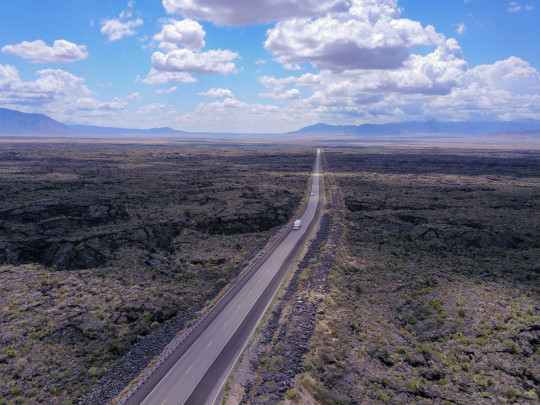

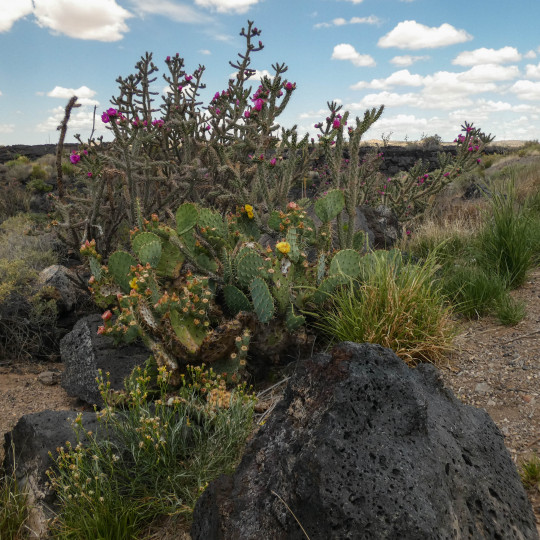

Located just four miles west of Carrizozo, Valley of Fires is one of the youngest lava flows in the continental United States, the second youngest in New Mexico behind the McCartys flow in the El Malpais National Monument.
Volcanic vents on Little Black Peak starting oozing lava about 5,000 years ago, filling the northern end of the Tularosa Valley with streams of molten rock for about 30 years. The volcanic field is associated with the Rio Grande Rift, a part of the Earth’s crust that is being gradually pulled apart. This creates faults, which provide paths for magma to reach the Earth’s surface. Whereas most of the volcanic activity has been steady seepage, the last eruption, about 1,500-2,000 years ago, was more explosive.
In total, the Carrizozo Malpais lava flow is 4-6 miles wide, 44-miles long, and approximately 160-feet thick, covering 125 square miles of the Tularosa Basin. The view from the top of Sierra Blanca is outstanding on a clear day. Valley of Fires lava flows extend from the north end of the Tularosa Basin to 14 miles north of the gypsum dunes of White Sands National Park. Dark and light. The geologic contrast is striking enough, and large enough, to be seen from space.
#new mexico#travel#geology#geologygeek#volcanic#road trip#weekend getaway#hiking#camping#off the beaten path#road less traveled#high desert#american west
124 notes
·
View notes
Video
Fourth South Switcher by James Belmont Via Flickr: Rio Grande 135, an EMD SW1200 switch engine, pulls through North Salt Lake, Utah on D&RGW's Ogden main the afternoon of Aug. 4, 1992. It seemed there was no assignment too difficult for these little "end cab" switch engines to perform.
#d&rgw#rio grande#sp#southern pacific#cnw#chicago & north western#1992#trains#freight train#history#north salt lake#utah
36 notes
·
View notes
Text
Extratropical cyclone kills 4 in southern Brazil

At least four people were killed in Brazil's southeastern State of Rio Grande do Sul after an extratropical cyclone hit the area Monday leaving hundreds of homes without electricity, Agência Brasil reported.
The storm that has been hitting the north of Rio Grande do Sul since dawn on Monday has caused the death of four people in the cities of Mato Castelhano, Passo Fundo, and Ibiraiaras.
According to the state Civil Defense, a man was electrocuted at home at around 9 am when he was hit by an electric shock in Passo Fundo. He was taken to hospital but did not survive. The discharge was probably caused by lightning.
Also in the morning, the Fire Brigade found the body of Cristiano Schuslei, 41, in the River Piraçuce, in Mato Castelhano. The river had overflowed and the driver was unable to control the vehicle, which was dragged into the river.
Continue reading.
#brazil#politics#brazilian politics#environmentalism#environmental justice#mod nise da silveira#image description in alt
7 notes
·
View notes
Text
All roads lead to Phoenix. On the gravy train of greenfield investment riding on the back of Inflation Reduction Act legislative incentives in the United States, no county ranks higher than Arizona’s Maricopa. The county leads the nation in foreign direct investment, with Taiwan Semiconductor Manufacturing Corp. (TSMC), Intel, LG Energy, and others expanding their footprint in the Grand Canyon State. But Phoenix is neither the next Rome nor the next Detroit. The reasons boil down to workers and water.
First, the labor. America’s skilled worker shortage has been well documented since before the Trump-era immigration slump and pandemic border closures. Especially in the tech industry—the United States’ most productive, high-wage, and globally dominant sector—a huge deficit in homegrown engineering talent and endlessly bungled immigration policies have left Big Tech with no choice but to outsource more jobs abroad.
Arizona dangled its low taxes and sunshine, but TSMC has had to fly in Taiwanese technicians to jump-start production at the 4 nanometer chip plant that was meant to be completed by 2024, but has been delayed until 2025 at the earliest.
The salvage operation calls into question whether the more advanced and miniaturized 3 nanometer plant—scheduled to open in 2026 will stay on course. (With two-thirds of its customer base—including Apple, AMD, Qualcomm, Broadcom, Nvidia, Marvell, Analog Devices, and Intel—in the United States, it’s no wonder TSMC wants to speed things up.)
From electric vehicles to gaming consoles, the forecasted demand for the company’s industry-leading chips is projected to rise long into the future—and its market share is already north of 50 percent. Given the geopolitical risks it faces in Asia, a well-trained U.S. workforce could give it the comfort to establish the United States as a quasi-second headquarters. After all, Morris Chang, the company’s founder, had a long first career with Texas Instruments.
But the next slowdown they may face is Arizona’s dwindling water supply. In just the past year, Scottsdale cut off water to Rio Verde Foothills, an upscale unincorporated suburb on its fringes, due to the region’s ongoing megadrought and its curtailed allocation of Colorado River water. This was followed by Phoenix freezing new construction permits for homes that rely on groundwater.
Forced to find other sources, industry players have stepped up buying water rights from farmers, essentially bribing them to stop growing food that would serve the region’s fast-growing population. Then there are the backroom deals involved in an Israeli company receiving the green light for a $5.5 billion project to desalinate water from Mexico’s Sea of Cortez and pipe it 200 miles uphill through deserts and natural preserves to Phoenix.
Water risk brings political risk for companies. Especially in Europe, governments are carefully weighing the short-term benefits of corporate investment versus the climate stress it exacerbates. They have good reason to be suspicious: Firms such as Microsoft have been notoriously inconsistent in reporting their water consumption, and promises to replenish consumed water haven’t been delivered on. And even if data centers are becoming more efficient, growing demand just means more of them. Some European provinces have blocked data center development, pushing them to locations with high heat risk.
Europe’s regulatory stringency has long been off-putting to foreign investors, which is what makes European officials so weary of Washington’s aggressive Inflation Reduction Act, CHIPS and Science Act and Infrastructure Investment and Jobs Act.
But to fulfill its promise of putting the United States on a path toward sustainable industrial self-sufficiency, these policies need to better align investment with resources, matching companies to geographies that best suit their needs. It would be better to direct capital allocation to climate resilient regions than to throw good money after potentially stranded assets.
If any company ought to know better on all these matters, it’s TSMC. In Taiwan itself, the industry’s huge energy and water consumption are a source of controversy and difficulty. Not only have droughts on the island occasionally slowed production, but the company’s own water consumption rose 70 percent from 2015-19.
Furthermore, Taiwan knows that its real special sauce is precisely the technically skilled workforce that the United States lacks. Yet TSMC has doubled down on Phoenix, a place without a reliable long-term water supply for industry, little in the way of renewable energy, and a construction freeze that will make it challenging to house all the workers it needs to import.
With all the uncertainty over both water and workers, this begs the question of whether the semiconductor company the entire world is courting would have been better off establishing its U.S. beachhead in the upper Midwest or northeast instead? Ohio, upstate New York, and Michigan rank high in greenfield corporate investments, resilience to climate shocks, and are abundant in quality universities and technical institutes.
Amid accelerating climate change and an intensifying war for global talent, how can those devising U.S. industrial policy better select the appropriate locations to steer investment to?
States with higher climate resilience than Arizona are starting to flex for greater investment. According to recent data, Illinois has climbed to second place nationally for corporate expansion and relocation projects. The greater Chicago area and state as a whole are touting their tax benefits, underpriced real estate, growth potential, and grants to prepare businesses to cope with climate change.
Other parts of the Great Lakes region, such as Michigan and Ohio, are also regaining confidence in their industrial revival, pitching heavily for both domestic and foreign commercial investment while emphasizing their affordability and climate adaptation plans.
Just over the border, Canada has been wildly successful in poaching foreign skilled workers unable to secure or maintain green card status in the United States while also investing heavily in economic diversification—all with the benefit of nearly unlimited natural resources and energy supplies. While Canada hasn’t yet rolled out Inflation Reduction Act-style tax breaks to lure investors, it abounds in critical minerals for EV batteries (nickel, cobalt, lithium and rare earths such as neodymium, praseodymium, and niobium) as well as hydropower.
The more that climate change warps the United States, the more grateful it should be that its most natural and staunch ally occupies the most climate resilient real estate on the North American continent, even taking into account the raging wildfires of this summer. But rather than covet Canada the way China does Russia—as a vast and depopulated resource bounty—the United States and Canada should cooperate far more proactively on a continental scale industrial policy that would bring about true self-sufficiency from the Arctic to the Caribbean.
This is where geopolitical interests, economic competition, and climate adaptation converge. As Canada’s population surges by up to 1 million new permanent migrants annually, a more unified North American system would be more self-sufficient in crucial commodities and industries, less vulnerable to supply chain disruptions abroad, and avoid unnecessary carbon emissions from excessive inter-continental trade. Thirty years after the NAFTA agreement, it seems more sensible than ever to graduate toward a more formal, autarkic North American Union.
One can easily imagine Greenland joining one day—the country already enjoys autonomy from its colonizer (Denmark) and is now pushing for complete independence, driven partly by the desire to control more of the riches that climate change has revealed it to possess.
Meanwhile, in Taipei, there are far more complex geopolitical consequences to consider. TSMC has long been considered Taiwan’s “silicon shield,” a leader of industry so important that a conflict that took it offline would be a major own-goal for China. But it is precisely the combination of the China threat, environmental stress, and pandemic-era supply chain disruptions that convinced TSMC’s customers that its home nation represents too large a concentration risk.
Now TSMC and its rivals are expanding production from Japan to the United States, Europe, and India. This globally diversified set of chip manufacturers is easier for China to exploit as countries more susceptible to Chinese pressure become less rigid in compliance with U.S.-led export controls over advanced technologies.
At the same time, if the United States no longer depends on Taiwan itself for the majority of its semiconductor supply in just five to seven years, will it be as willing to defend Taiwan militarily? This, not Ukraine, is what Beijing is watching for as it pursues its own “Made in China” quest for self-sufficiency.
Industrial policy is back in vogue as a national security and economic strategy. But to get it right requires aligning investment into industry and infrastructure with the geographies of resources and resilience. The countries that build climate adaptation into their strategies will be the ones that build back better.
11 notes
·
View notes
Photo
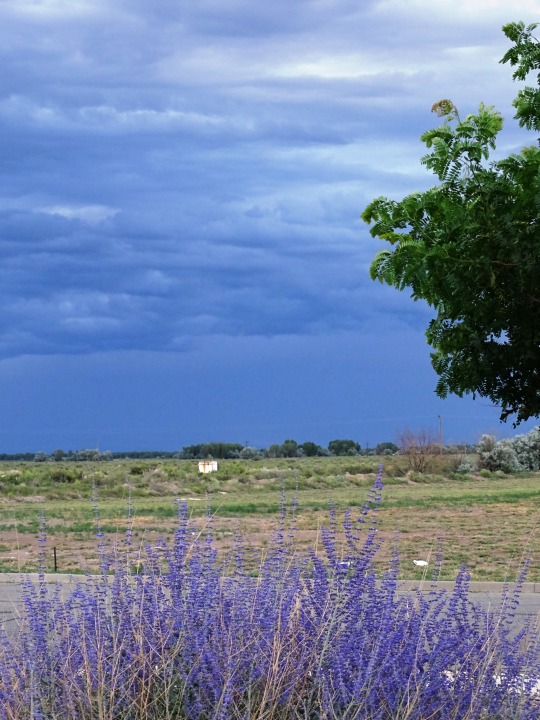

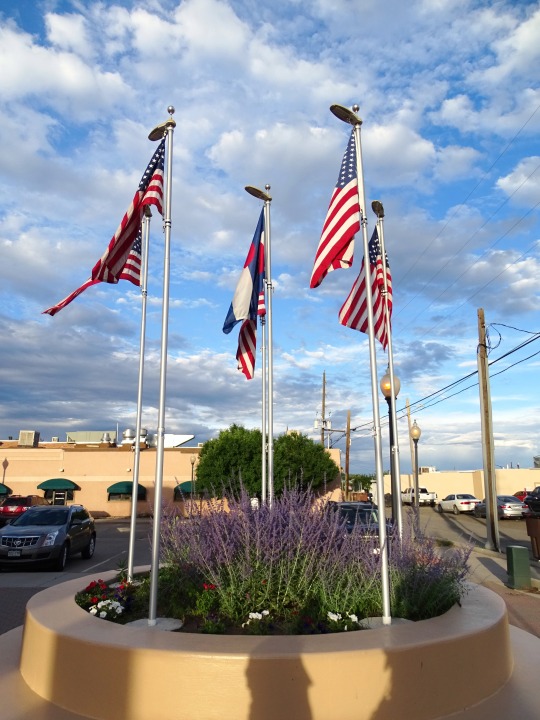







Alamosa, CO (No. 4)
The San Luis Valley was ceded to the United States by Mexico following the Mexican–American War. Hispanic settlers began moving north and settling in the valley after the United States made a treaty with the Utes and established a fort in the early 1850s. Prior to the Mexican war the Spanish and Mexican governments had reserved the valley to the Utes. Later in the 19th century Anglo settlers began to settle in the valley and engaged in mining, ranching, and irrigated agriculture. Today the valley has a diverse Anglo and Hispanic population.
The San Luis Valley is the broad, generally flat, valley at the headwaters of the Rio Grande in south central Colorado and far north central New Mexico. The northern portion of the San Luis Valley is an endorheic basin; surface water does not exit this area. Irrigated agriculture is possible in the area due to groundwater and streams fed by the average 100 inches of snow the surrounding mountain ranges receive. The southern portion is drained by the Rio Grande.
There is no clear southern boundary but the term is generally used to include the San Luis Hills of southern Colorado and the Taos Plateau of northern New Mexico. About 50 miles from east to west and about 150 miles from north to south, the valley is bounded on the east by the Sangre de Cristo Mountains and on the west by the San Juan Mountains.
Source: Wikipedia
#San Luis Valley#Centennial Plaza#US flag#street lamp#street light#USA#evening sky#dark clouds#original photography#downtown#vacation#tourist attraction#landmark#lavender#San Juan Mountains#summer 2022#Rocky Mountains#Colorado#landscape#countryside#I really love the first pic#architecture#small town#Alamosa
8 notes
·
View notes
Text
MT Reads: Vampires of El Norte
I like a good long metaphor about colonialism imbued with all its due monstrousness. I also like the horror of actual monsters who creep in the background, ready to pounce and devour. This thrilling supernatural western offers both in a tale of love in the backdrop of war and terrifying creatures of the night.
Isabel Cañas has a masterful pen in blending history with horror. I loved her debut, The Hacienda, for putting us in a Gothic setting filled with secrets and ghosts in the aftermath of the Mexican War of Independence. In Vampires of El Norte, she takes us to the northern border between Mexico and Texas, rife with tension on the cusps of the Mexican-American War.
Our main characters, Nena and Nestor, grew up together on the same ranch. They were close despite their class differences, (Nena is the daughter of a prominent rancher, Nestor is the son of a vaquero) but a near tragedy in their youth at the hands of a vampire leaves the two estranged for nine years. Nestor believes Nena dead, Nena thinks Nestor up and abandoned her. The shock of their reunion comes as the Anglos to the north of them overtake the Rio Grande, threatening the homes of everyone who lives along the border.
Vampires of El Norte features lush prose that highlights the setting and spoons out the dread as twilight gives way to night. It has an engrossing will they/won't they romantic subplot and a lot of historical detail to sink your teeth into. I loved getting a glimpse of the daily lives of the vaqueros and rancheros that lived during that period, and the culture surrounding a place and time I'm only vaguely familiar with (but would love to learn more about!). I personally got a bit weary of the romance plot in the last third but the chemistry between the leads was engaging, their banter insightful and funny at times. I got through most of the book within a 24 hour period if that tells you anything.
If any of these things are of interest to you, I'd check it out. It's a solid 4 out of 5 in my book!

2 notes
·
View notes
Note
If you ever go to Brazil I suggest somewhere in the North/Northeast instead of the big cities like São Paulo or Rio, don't get me wrong they have their charm (especially Rio), but you miss soo much if you focus on only those two, I'm from Canada and I go to Brazil every year, in São Paulo/Rio you get a lot of cultural stuff, but basically none of the natural stuff and going to Brazil and not going to at least one beach is like you didn't go at all, in my opinion, the Northeast/North have a great mix of cultural and natural attractions. Especially if you're traveling during July/June, go to the Northeast (I suggest Campina Grande, went there in 2018 and it was amazing!!!) and you'll get to experience the São João festival and I've been told by Brazilians that the real stuff is in the Northeast. If you Do go to Rio go during the carnaval season (February/March), the city looks so pretty and there's a lot of street festivals to go to.
I've been traveling to Brazil since like, 2012...? 2012-2013 for sure, my top 5 cities are these ones:
1. São Luís, Maranhão ← a lot of natural and historical stuff, there's a drink that's called Jesus's Guarana and it's the closest you'll ever come to tasting pink
2. Gramado, Rio Grande do Sul ← the city is sooo pretty at the end of the year, and the chocolate is also really really good
3. Olinda, Pernambuco ← went there during Carnival to a thing called Galo da Madrugada, It's a street festival that has a giant chicken and lasts the Whole day until the morning of the next day.
4. São Paulo, São Paulo ← I know I know I said to not focus on it, but there's a Lot of stuff to do there, a lot of museums and historical stuff as well as a huge Japanese neighborhood, it's like a mini Japan
5. Campina Grande, Paraíba ← I only went there once during São João, but honestly it was Sooo good, the food was one of the best I've ever eaten and the festivals were all so gorgeous, I was planning on going again on 2021, but covid :/
So yeah, I recommend going to Brazil a 100%, there's a lot of really cool stuff there
Oh my god thank you so much! I feel like I know less about brasil than other countries as I have always had a bit more affinity to the Spanish speaking places over Portuguese but this is incredible and looking through some of those cities are gorgeous. Gramado especially looks almost swiss?!
I've of course heard of the bigger cities and like the amazon and pantanal but thank you so much, gives some fantastic ideas for lesser known stuff
#travel#thank you all so much i really appreciate the time and passion for these places its so interesting and so useful
0 notes
Text
CFB Breakdown - Week Five (Saturday, Part 2).
G5 vs G5:
Rio Grande Rivalry New Mexico at New Mexico State - 7 PM ESPN+. New Mexico leads the series, 73-35-5.
Modern Day Hate Georgia Southern at Georgia State - 2:30 PM ESPNU. Georgia State leads the series, 6-4.
Middle Tennessee State at Memphis - 6:30 PM ESPNU. MTSU leads the series, 17-9-1.
Buffalo at Connecticut - 11 AM CBSSN. Connecticut leads the series, 16-5.
San Diego State at Central Michigan - 2:30 PM CBSSN. SDSU leads the series, 1-0.
Liberty at Appalachian State - 2:30 PM ESPN+. App State leads the series, 7-3.
Ball State at James Madison - 12:30 PM ESPN+. Ball State leads the series, 1-0. (Last meeting - 1997).
Massachusetts at Miami (Oh.) - 2:30 PM ESPN+. Miami (Oh.) leads the series, 4-1.
Texas State at Sam Houston State - 2 PM ESPN+. First meeting.
Old Dominion at Bowling Green - 4 PM ESPN+. First meeting.
Western Michigan at Marshall - 2:30 PM ESPN+. Western Michigan leads the series, 22-12.
AAC Conference Games: South Florida at Tulane - 11 AM ESPNU. Tulane leads the series, 3-1.
Navy at UAB - 11 AM ESPN2. Navy leads the series, 1-0.
Charlotte at Rice - 6 PM ESPN+. Rice leads the series, 3-2.
Tulsa at North Texas - 6 PM ESPN+. Tulsa leads the series, 17-8.
UTSA at East Carolina - 3 PM ESPN+. UTSA leads the series, 1-0.
Mountain West Games: Fresno State at UNLV - 2:30 PM FS1. Fresno State leads the series, 20-6.
Air Force at Wyoming - 7 PM CBSSN. Air Force leads the series, 31-27-3.
Sun Belt - UL Monroe at Troy State - 6 PM ESPN+. Troy State leads the series, 12-8-1.
CUSA - Louisiana Tech at Florida International - 5 PM ESPN+. Louisiana Tech leads the series, 5-1.
MAC Conference Games: Akron at Ohio - 2:30 PM ESPN+. Ohio leads the series, 26-13-1.
Eastern Michigan at Kent State - 2:30 PM ESPN+. Kent State leads the series, 19-16.
FCS Games: North Dakota State at Illinois State - 2:00 PM ESPN+. Murray State at North Dakota - 1 PM ESPN+. Montana at Eastern Washington - 7 PM ESPN+. Montana State at Idaho State - 5 PM ESPN+. Idaho at UC Davis - 9 PM ESPN+. Cal Poly at Northern Colorado - 2 PM ESPN+. Sacramento State at Northern Arizona - 3 PM ESPN+. Southern Illinois at South Dakota - 1 PM ESPN+. McNeese State at Weber State - 7 PM ESPN+. Houston Christian at Indiana State - Noon ESPN+. Youngstown State at Missouri State - 2 PM ESPN+. Lindenwood at Eastern Illinois - 2 PM ESPN+. Lamar at Central Arkansas - 6 PM ESPN+. Abilene Christian at Utah Tech - 8 PM ESPN+. Southern Utah at Austin Peay - 1 PM ESPN+. Southeastern Louisiana at Tarleton State - 6 PM ESPN+. Northwestern State at Southeastern Missouri State - 3 PM ESPN+. Tennessee Tech at Gardner Webb - 3 PM ESPN+. Portland State at UT Chattanooga - 5 PM ESPN+. Charleston Southern at Tennessee State - 5 PM ESPN+. Samford at Furman - 1 PM ESPN+. Mercer at Wofford - 12:30 PM ESPN+. Robert Morris at Eastern Kentucky - 1 PM ESPN+. San Diego at Drake - Noon ESPN+. Valparaiso at Morehead State - Noon ESPN+. Jackson State at Texas Southern - 6 PM ESPN+. East Tennessee State at The Citadel - 1 PM ESPN+. North Alabama vs West Georgia - ESPN+. North Carolina A&T at South Carolina State - 5 PM ESPN+. Grambling State vs Prairie View A&M - ESPN+. North Carolina Central vs Norfolk State - 2 PM ESPN+. Davidson at Presbyterian - 6 PM ESPN+. Columbia at Georgetown - 11:30 AM ESPN+. Bucknell at Lehigh - 11 AM ESPN+. Dayton at Marist - 11 AM ESPN+. Howard at Princeton - 2 PM ESPN+. Yale at Cornell - 1 PM ESPN+. Colgate at Pennsylvania - Noon ESPN+. Harvard at Brown - 11 AM ESPN+. Richmond at Elon - 1 PM Flo Video. Sacred Heart at Delaware - 2:30 PM Flo Video. Morgan State at Stony Brook - 2:30 PM Flo Video. Maine at Albany (NY.) - 2:30 PM Flo Video. Long Island U at Villanova - 5 PM Flo Video. Delaware State at Campbell - 1 PM Flo Video. Fordham at Monmouth (NJ.) - Noon Flo Video. Hampton at William & Mary - 5 PM Youtube Video. Dartmouth at Merrimack - Noon NESN+. Alabama State at Bethune Cookman - 2 PM HBCU Go Video. Alcorn State at Mississippi Valley State.
FBS vs FCS: Holy Cross at Syracuse - 11 AM ESPN+. Wagner at Florida Atlantic - 5 PM ESPN+. UT Martin at Kennesaw State - 5 PM ESPN+.
Other Games: Miles ay Allen 12:00 pm GRIO Clark Atlanta at Lane 2:00 pm $espn+ Video Frostburg at Mercyhurst 12:00 pm NEC Front Row Video FVSU at Savannah State 5:00 pm $espn+ Video Lynchburg at Butler 12:00 pm $Flo Video McKendree at Western Illinois 6:00 pm $espn+ Video
0 notes
Text
Hurricane Beryl Set to Impact Central Texas: What You Need to Know

Hurricane Beryl Set to Impact Central Texas: Prepare for Strong Winds, Heavy Rain, and Storm Surge. As Hurricane Beryl intensifies in the Gulf of Mexico, Central Texas is bracing for its imminent landfall. The National Hurricane Center (NHC) has issued multiple warnings, urging residents to prepare for potentially life-threatening conditions. Here's everything you need to know about Hurricane Beryl's path, current status, and what to expect in the coming days. Download the URBT News App from your App store. Apple / Andriod Current Location and Movement As of the latest advisory at 4:00 PM CDT (2100 UTC), Hurricane Beryl is located at 26.8N 95.5W, approximately 130 miles south-southeast of Matagorda, Texas, and 135 miles east-southeast of Corpus Christi, Texas. The storm is moving north-northwest at 12 mph with maximum sustained winds of 65 mph. Beryl is expected to strengthen, potentially reaching hurricane status before making landfall on the middle Texas coast early Monday. Watches and Warnings in Effect Storm Surge Warning: - North Entrance of Padre Island National Seashore to Sabine Pass, including Corpus Christi Bay, Matagorda Bay, and Galveston Bay. - Hurricane Warning: - Texas coast from Baffin Bay northward to San Luis Pass. - Hurricane Watch: - Texas coast north of San Luis Pass to Galveston Island. - Tropical Storm Warning: - Texas coast south of Baffin Bay to the mouth of the Rio Grande, and north of San Luis Pass to Sabine Pass. - These warnings indicate that hurricane and tropical storm conditions are imminent. Residents in these areas should take immediate action to protect life and property. - Expected Impacts - Wind: Hurricane Beryl is expected to bring hurricane-force winds to the warning areas by early Monday. Tropical storm conditions will begin tonight, making outdoor preparations dangerous. - Storm Surge: The combination of storm surge and tide could result in flooding of normally dry areas near the coast. Expected storm surge heights above ground level are as follows: - Port O'Connor to San Luis Pass: 4-7 feet - Matagorda Bay: 4-7 feet - San Luis Pass to High Island: 4-6 feet - Galveston Bay: 4-6 feet - Mesquite Bay to Port O'Connor: 3-5 feet - High Island to Sabine Pass: 3-5 feet - For more detailed information, visit the National Hurricane Center and your local National Weather Service office. Hurricane Beryl Set to Impact Central Texas Rainfall: Heavy rainfall of 5 to 10 inches, with isolated amounts up to 15 inches, is expected across the middle and upper Texas Gulf Coast and eastern Texas through Monday night. This can cause significant flash flooding, urban flooding, and river flooding. Tornadoes: A few tornadoes are possible along the middle and upper Texas Coast through tonight, extending into eastern Texas, Louisiana, and Arkansas on Monday. Surf: Swells generated by Hurricane Beryl will affect eastern Mexico and much of the U.S. Gulf Coast, creating life-threatening surf and rip current conditions. Preparation and Safety Tips Evacuation: If you are in an evacuation zone, leave immediately. Follow the instructions from local authorities to ensure your safety. Supplies: Ensure you have essential supplies, including water, non-perishable food, medications, and emergency kits. Secure Property: Secure outdoor items, reinforce windows and doors, and move valuable items to higher ground. Stay Informed: Continuously monitor updates from the National Weather Service and local news for the latest information on Hurricane Beryl's path and impact. Hurricane Beryl Set to Impact Central Texas Hurricane Beryl poses a significant threat to Central Texas with its potential for strong winds, heavy rainfall, and dangerous storm surge. Preparation and prompt action are crucial to minimize the impact of this powerful storm. Stay informed, stay safe, and take all necessary precautions as Hurricane Beryl approaches. Read the Supreme Court Decision Read the full article
0 notes
Text
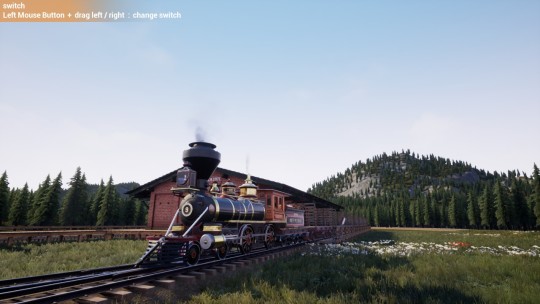
Our Railway's Number 9, and my second engine, Zephyr. When I last drove her she was severly allergic to staying on the rails at speed. Hopefully this latest update fixed that, as she is a lovely engine, and well behaved as long as you watch her speed.
13 notes
·
View notes
Text
GRAINS-Corn, soybeans gain ahead of USDA supply-demand report BEIJING, May 10 (Reuters) - Chicago soybeans and corn firmed on Friday, with wheat following suit ahead of a U.S. Department of Agriculture supply-and-demand report that is expected to show strong global supply. FUNDAMENTALS The most-active wheat contract on the Chicago Board of Trade (CBOT) Wv1 was up 0.27% at $6.39-2/8 a bushel, as of 0149 GMT. Corn Cv1 gained 0.22% to $4.57-4/8 a bushel, while soybeans Sv1 climbed 0.02% to $12.08-4/8 a bushel. Russian regions hit by frosts this month will re-sow crops that were killed by the cold, state news agency TASS quoted the agriculture ministry as saying on Thursday. Soy and corn harvesting in Brazil's Rio Grande do Sul state has progressed slowly, according to fresh estimates by crop agency Emater on Thursday, which confirm fears that floods continue to disrupt field work and will impose heavy losses on local farmers. Devastating floods that hit Rio Grande do Sul state should cause farmers to lose an estimated 1.32 million metric tons of soybeans there, affecting overall soybean output in the world's largest producer and exporter of the oilseed, consultancy AgResource said on Thursday. Argentina's Buenos Aires grain exchange warned again on Thursday it may cut its forecast for the 2023/24 soybean crop, currently at 51 million metric tons, as warm weather and a lack of rain in the country's north have led to lower-than-expected yields. Argentine grains ports and soybean crushing plants in the area surrounding the major Rosario hub are standing idle due to a nationwide strike launched on Thursday, the head of the major grains exporting nation's oilseed export chamber said. The El Nino weather pattern should fade out by June but could be replaced by the La Nina phenomenon by the second half of the year, a U.S. government forecaster said on Thursday. Iran will not import any wheat until March 2025 as it will rely on domestic production, the Iranian Student News Agency reported a deputy at the Agriculture Ministry saying on Thursday. Investors are expecting the USDA report due on Friday to show ample supplies in the United States and globally. MARKET NEWS World stocks rallied on Thursday, led by surging European shares and a larger-than-expected rise in U.S. weekly jobless claims that buoyed interest rate cut hopes, while the dollar eased as the market awaits key inflation data next week.
0 notes
Text
Discover the World in Our International Tour Packages

Are you ready to embark on a journey of discovery? Look no further than our international tour packages, offering travelers the opportunity to explore the world's most fascinating destinations. Whether you're seeking adventure, relaxation, or cultural immersion, our meticulously crafted itineraries promise unforgettable experiences that cater to every traveler's desires. Join us as we unveil the wonders waiting to be discovered in our international tour packages.1. Europe: A Tapestry of Culture and HistoryImmerse yourself in the rich tapestry of Europe, where medieval castles, charming villages, and bustling cities await. Explore the romantic streets of Paris, wander through the ancient ruins of Rome, and cruise along the picturesque canals of Venice. From the majestic peaks of the Swiss Alps to the sun-kissed beaches of the Mediterranean, Europe offers a diverse array of experiences that will leave you spellbound.2. Asia: Where Tradition Meets ModernityJourney to the enchanting continent of Asia, where ancient traditions coexist with modern marvels. Marvel at the iconic skyline of Hong Kong, immerse yourself in the vibrant street life of Bangkok, and discover the cultural treasures of Kyoto. From the tranquil backwaters of Kerala to the bustling markets of Istanbul, Asia's diverse landscapes and rich heritage offer endless opportunities for exploration and discovery.3. Africa: Safari Adventures and Natural WondersEmbark on a safari adventure in Africa, where the majestic wildlife of the savannah roams free. Witness the awe-inspiring beauty of Victoria Falls, embark on a game drive through the Serengeti, and encounter endangered mountain gorillas in their natural habitat. From the sun-drenched beaches of Zanzibar to the rugged landscapes of Namibia, Africa's natural wonders will leave you breathless.4. North America: From Coast to CoastExplore the vast expanse of North America, where towering skyscrapers, pristine wilderness, and cultural diversity await. Marvel at the natural wonders of the Grand Canyon, experience the glitz and glamour of Las Vegas, and immerse yourself in the cultural melting pot of New York City. Whether you're hiking in the Rocky Mountains or lounging on the beaches of Hawaii, North America offers something for every traveler in our international tour packages..5. South America: Land of Diversity and AdventureEmbark on an adventure in South America, where ancient civilizations, lush rainforests, and vibrant cities beckon. Explore the mystical ruins of Machu Picchu, cruise through the Amazon River, and dance the night away in the streets of Rio de Janeiro. From the breathtaking landscapes of Patagonia to the colorful markets of Bolivia, South America's diversity will captivate your senses.In conclusion, our international tour packages offer travelers the opportunity to discover the world's most captivating destinations. Whether you're dreaming of exploring the historic landmarks of Europe, embarking on a safari adventure in Africa, or immersing yourself in the vibrant cultures of Asia, our meticulously crafted itineraries ensure that every moment of your journey is filled with unforgettable experiences and cherished memories.
0 notes
Text
Thu 4/4
Thu 4/4
Had an exciting start to the day! We got on the road to Big Bend NP but forgot to turn off our security system for Edith to enter our house this morning to clean. No cell coverage at 11am Texas time, so we searched frantically for a place in the boondocks with WiFi. Luckily we came upon the Jackass Country Store along the way, which had usable WiFi. By the time we turned off the house alarm, Edith had already set it off. We narrowly avoided a call to the San Ramon PD by calling the security service, but poor Edith was scared. Not a complete disaster but close! We bought some Lone Star beer and snacks to thank the store owner. Continuing on to the park, we passed by a cattle drive in progress, complete with cowboys on horseback! Entering Big Bend Park, we drove south on Ross Maxwell Scenic Drive to the Santa Elena Canyon trailhead, stopping several time to take photos (spectacular rock formations like Mule Ears, Sotol Vista, etc). Took a short but spectacular hike up the canyon and above the Rio Grande River, and saw some goats on the cliffs on the Mexican side of the River. After this we drove back north on the Scenic drive and then east to the cutoff for Chisos Basin Road. Drove to the dead end of this road past gorgeous rock formations, and into forested areas where bears and mountain lions roam (we didn’t see any). Edward got some caffeine for the long drive back to Alpine. Passing by some longhorn cattle (and 1 longhorn bull with extra long horns!), we arrived back at the Antelope Lodge as darkness fell. A very long but worthwhile day!
0 notes
Text
I know I have this because I can IMMEDIATELY tell you what references I use for most of these things-1 inch is my second thumb joint, 1 meter is my bow draw because I used to sell fabric by the yard and 1 yard=1 meter, 1 foot is a bit past my shoe, 1 gallon of water/milk is 8 pounds, it's about 20 miles to work because I use the range feature on my car and 20mi means I don't have to stop for gas on the way, it takes about 35 minutes if I stop for breakfast because I have to leave at :15 after, if I leave my car by :51, I'll get to the break room at :57. I can march off 10 yards pretty close even 20 years after marching band. 1 mile is about 4 blocks, but I'll never find it naturally. 1 hour is about 12 songs on my Playlist and it takes me about 25min to sweep my assigned area with my typical pattern.
BUT I also have normal Time blindness- if you put me in a car, I'll drive for 2 hrs and it will FEEL like both forever and 5 minutes, because that's where I lose time. Showering, stocking items, cleaning, typing, gaming, READING. All of these things are liminal spaces to me, where time doesn't exist and I will eventually wake up with no memory of how I got to the end. I listen to music during these things or set alarms(2 hrs driving is when I have to pee). I also have NO sense of direction and will flip directions on movements(as a little catholic child I had to remember Yosemite Sam "North, South,West and EAST of the Rio Grande" to do the sign on the cross correctly).
A lot of us with ADHD are familiar with the concept of time blindness, but for anyone who isn't: it's a neurological inability to have a consistent sense of the passage of time. If you put me in an empty room, gave me a button and told me to press it when I think it's been 15 minutes, I might press it after..... idk, anywhere between 3 minutes and 2 hours? And if we repeated it the next day the result would probably be wildly different!
But something I've only seen mentioned in one (1) Reddit post, which took some extensive digging to find, is the same effect extending to ALL things measured in numbers. Distance, weight, length, height, amount, space, volume, percentage... For me, small numbers are a bit easier, I could approximate a centimetre probably, but a metre would be much harder and 10 or 100 would likely miss the mark by a lot. Also, anything that can't be easily measured with a ruler or a measuring tape (like weight or volume) is even harder since I don't encounter reference points (like a 1kg hand weight) for those as frequently as I see visual representations of specific lengths.
It's not dyscalculia or anything like that, I'm decent at math (and the OP of the Reddit post was a math major) and I have no other difficulties with numbers, it's just a disconnect in translating real life experiences like sensory input into numbers (and possibly also inconsistent processing of sensory input? Like how the same sound volume is okay one day but hurts my ears the next?), which I think is basically the same thing as what happens with time blindness. For now I've been calling it "measurement blindness" since I've never seen a name for it anywhere, but maybe "quantity blindness" could also work?
I've talked to other people with time blindness to see if they experience this too, but so far none of them have known what I'm talking about. I'd really like to know how many of us are out there and if anyone knows literally anything actually scientific about this very inconvenient phenomenon!
Tl;dr: bc I am wordy:
It's like time blindness but for all things measured in numbers
Not dyscalculia or caused by it
Pretty much never seen it talked about anywhere
Please tell me if it sounds familiar and/or you know something about it, thank
12K notes
·
View notes